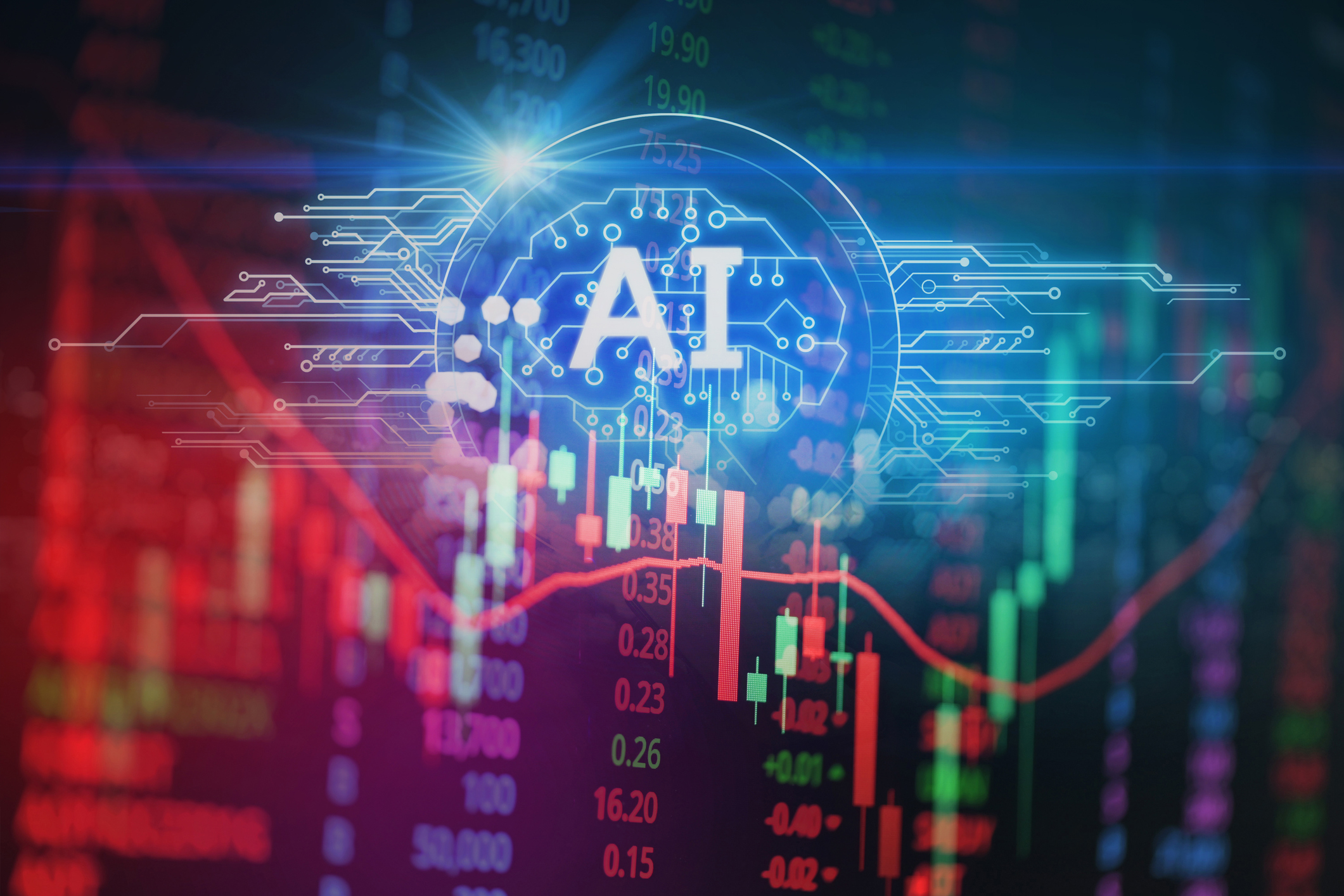Semiconductor Sales Will Bounce Back in 2024: The Kiplinger Letter
Global semiconductor sales will rebound in 2024 driven by a frenzy of innovation.

To help you understand what is going on in the technology sector in the U.S. and around the world, and what we expect to happen in the future, our highly experienced Kiplinger Letter team will keep you abreast of the latest developments and forecasts (Get a free issue of The Kiplinger Letter or subscribe). You'll get all the latest news first by subscribing, but we will publish many (but not all) of the forecasts a few days afterward online. Here’s the latest…
As semiconductor sales rebound next year, look for a frenzy of innovation that’s fueled by fierce competition, hefty investment by chip firms and governments, and rapid manufacturing advances.
A big driver of sales: Artificial intelligence, especially generative AI tools that can compose text, write computer code, create images and much more. Global semiconductor sales will rise 13% in 2024 versus 2023, hitting $590 billion, per estimates by World Semiconductor Trade Statistics. That comes after this year’s 9% decline.
Expect sales to be notably strong in the U.S. for high-end chips, with the strongest sales growth in memory, soaring 45% in 2024, after dropping 31% this year. That bodes well for Samsung, SK Hynix and Micron. Integrated circuits will see sales jump 16%, which is good news for vendors of high-end CPUs and GPUs, such as Nvidia, Intel, AMD, MediaTek and Qualcomm. There are weaker prospects for other chips used in automobiles, industry and the Internet of Things, though even those will eke out single-digit growth.
From just $107.88 $24.99 for Kiplinger Personal Finance
Become a smarter, better informed investor. Subscribe from just $107.88 $24.99, plus get up to 4 Special Issues

Sign up for Kiplinger’s Free Newsletters
Profit and prosper with the best of expert advice on investing, taxes, retirement, personal finance and more - straight to your e-mail.
Profit and prosper with the best of expert advice - straight to your e-mail.
The skyrocketing demand for powerful AI chips has reset industry ambitions. Nvidia stands alone as the leader, being the sole provider of top-end AI chips that are used to train and execute neural networks, such as generative AI, which require massive amounts of calculations performed in parallel at low energy. But others are nipping at Nvidia’s heels, including AMD, Intel and Huawei, trying to compete with new AI chips. Meanwhile, top chip manufacturers are pressing harder. Taiwan Semiconductor Manufacturing Co., the top dog, will keep pushing the limits of chipmaking. Intel’s plan is to leapfrog five generations of chipmaking in four years. Samsung, too, is spending heavily to outdo TSMC.
Innovation at leading-edge manufacturers is paying off for firms creating custom AI chips next year and beyond, as chip designs can harness huge leaps in performance.
Some noteworthy chips and applications to look out for next year include more powerful data center chips from Nvidia where current models cost $25,000 to $40,000 each. Big buyers include Amazon, Microsoft, Alphabet, Meta and Baidu. Uses include real-time language translation, drug discovery and smarter chatbots. Also look for AI chips for smartphones and laptops and PCs with multiday battery life and the power to run generative AI, and smartphones that can convert text to images or spot the best facial expressions in a group of photos to create the perfect shot.
This forecast first appeared in The Kiplinger Letter, which has been running since 1923 and is a collection of concise weekly forecasts on business and economic trends, as well as what to expect from Washington, to help you understand what’s coming up to make the most of your investments and your money. Subscribe to The Kiplinger Letter.
Related Content
Profit and prosper with the best of Kiplinger's advice on investing, taxes, retirement, personal finance and much more. Delivered daily. Enter your email in the box and click Sign Me Up.

John Miley is a Senior Associate Editor at The Kiplinger Letter. He mainly covers AI, technology, telecom and education, but will jump on other business topics as needed. In his role, he provides timely forecasts about emerging technologies, business trends and government regulations. He also edits stories for the weekly publication and has written and edited email newsletters.
He holds a BA from Bates College and a master’s degree in magazine journalism from Northwestern University, where he specialized in business reporting. An avid runner and a former decathlete, he has written about fitness and competed in triathlons.
-
 I'm want to give my 3 grandkids $5K each for Christmas.
I'm want to give my 3 grandkids $5K each for Christmas.You're comfortably retired and want to give your grandkids a big Christmas check, but their parents are worried they might spend it all. We ask the pros for help.
-
 If You're Not Doing Roth Conversions, You Need to Read This
If You're Not Doing Roth Conversions, You Need to Read ThisRoth conversions and other Roth strategies can be complex, but don't dismiss these tax planning tools outright. They could really work for you and your heirs.
-
 Could Traditional Retirement Expectations Be Killing Us?
Could Traditional Retirement Expectations Be Killing Us?A retirement psychologist makes the case: A fulfilling retirement begins with a blueprint for living, rather than simply the accumulation of a large nest egg.
-
 AI Appliances Aren’t Exciting Buyers…Yet
AI Appliances Aren’t Exciting Buyers…YetThe Kiplinger Letter Artificial intelligence is being embedded into all sorts of appliances. Now sellers need to get customers to care about AI-powered laundry.
-
 What to Expect from the Global Economy in 2026
What to Expect from the Global Economy in 2026The Kiplinger Letter Economic growth across the globe will be highly uneven, with some major economies accelerating while others hit the brakes.
-
 The AI Boom Will Lift IT Spending Next Year
The AI Boom Will Lift IT Spending Next YearThe Kiplinger Letter 2026 will be one of strongest years for the IT industry since the PC boom and early days of the Web in the mid-1990s.
-
 Amid Mounting Uncertainty: Five Forecasts About AI
Amid Mounting Uncertainty: Five Forecasts About AIThe Kiplinger Letter With the risk of overspending on AI data centers hotly debated, here are some forecasts about AI that we can make with some confidence.
-
 Worried About an AI Bubble? Here’s What You Need to Know
Worried About an AI Bubble? Here’s What You Need to KnowThe Kiplinger Letter Though AI is a transformative technology, it’s worth paying attention to the rising economic and financial risks. Here’s some guidance to navigate AI’s future.
-
 Will AI Videos Disrupt Social Media?
Will AI Videos Disrupt Social Media?The Kiplinger Letter With the introduction of OpenAI’s new AI social media app, Sora, the internet is about to be flooded with startling AI-generated videos.
-
 What Services Are Open During the Government Shutdown?
What Services Are Open During the Government Shutdown?The Kiplinger Letter As the shutdown drags on, many basic federal services will increasingly be affected.
-
 The Economy on a Knife's Edge
The Economy on a Knife's EdgeThe Letter GDP is growing, but employers have all but stopped hiring as they watch how the trade war plays out.